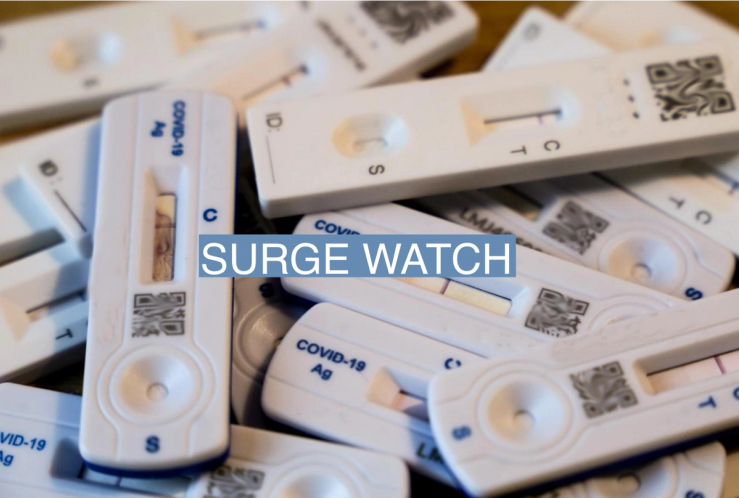The News
The wave of COVID-19 currently sweeping the U.S. is being led by JN.1, a new variant that is highly transmissible and showing up even in people who are vaccinated or have been infected before. Wastewater detection levels indicate that this could be the U.S.′ largest wave of infections since the 2021 omicron variant, with about 2 million Americans infected every day.
Despite the spike in cases, COVID-related hospitalizations and deaths are down from last year. The Centers for Disease Control and Prevention has reported an average of 1,400 deaths each week since Thanksgiving, which is less than half of the fatalities at that point last year.
SIGNALS
US government ‘passivity’ on new variant gives illusion that pandemic is over, expert warns
“It’s crickets from the White House on COVID now, with no messaging on getting the updated booster or masking,” COVID-tracking expert Dr. Eric J. Topol wrote in an op-ed for The Los Angeles Times. The White House said it is encouraging people to get boosters and test themselves at home, but press secretary Karine Jean-Pierre said Friday that the administration would not “get involved” in mask mandate decisions.
Only about 19% of U.S. adults have received the latest COVID vaccine. This season’s surge will likely be followed by a downtick, but Topol warned that people should not be lulled into thinking the pandemic is over, when in fact, “it’s actually raging.”
Spikes are happening around the world, but no need for lockdowns
There is no need for lockdowns or border closures right now, despite a surge of COVID cases in nations around the world, experts told Nikkei Asia, adding that countries are now better prepared to remain open than they were earlier in the pandemic. Canada and the Philippines are among the nations that saw a spike around the holidays, and cases are still on the rise in countries including Singapore, Malaysia, and Peru.
Seasonal ebbs and flows are to be expected, experts say, with increases more likely around the holidays. “What we are living through now is probably what will be happening for the foreseeable future,” epidemiologist Ooi Eng Eong told Singapore’s Channel News Asia.
Experts want to shift focus away from discussing the current wave’s peak
Some experts argue that focusing on how this is the biggest wave since omicron is not as helpful as making the public aware that transmissions are high and that they should protect themselves. The current wave will hit its peak mid-December 2023 to mid-February 2024, according to some estimates. But one COVID data expert told NBC’s Today, “People can get a little bit too concerned about the height of the peak. What’s really troubling is just the total number of days with a really high transmission.”
While this wave is still likely to keep hospitals busy, other experts are more optimistic, with one epidemiologist telling The New York Times: “We’re not seeing the signs that would make me think that we’re heading into another severe wave. So far, we’re in relatively good shape.”



